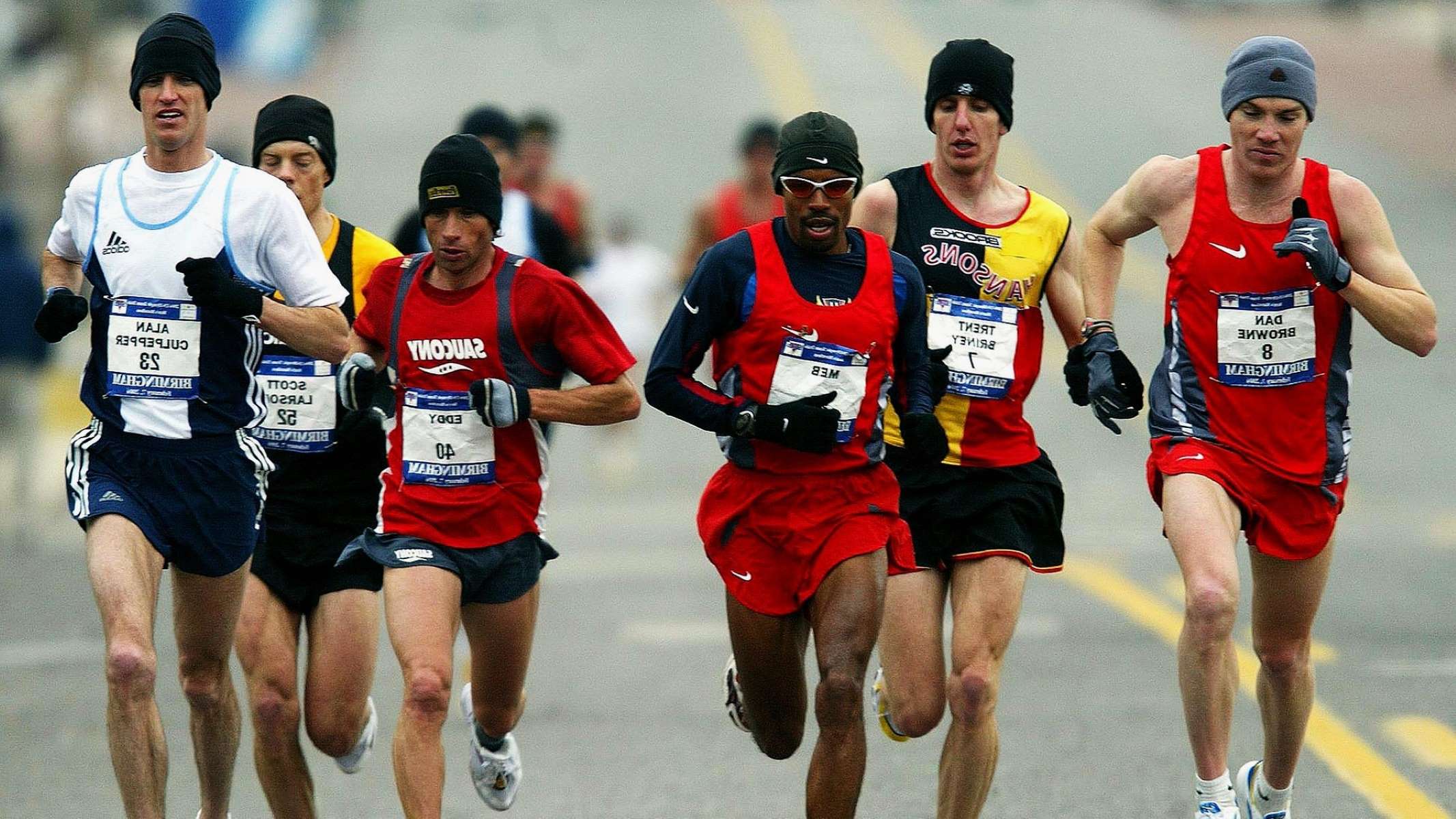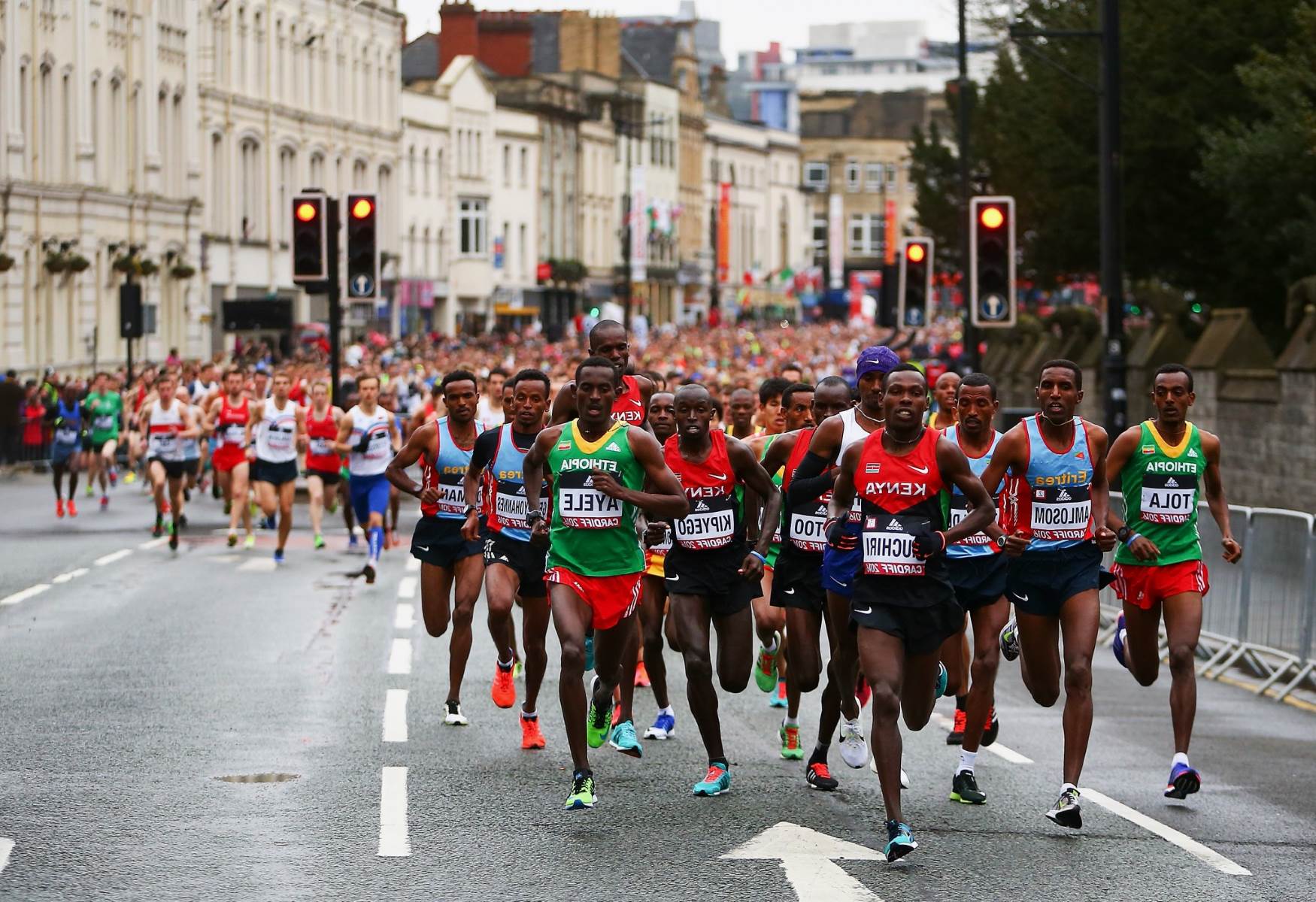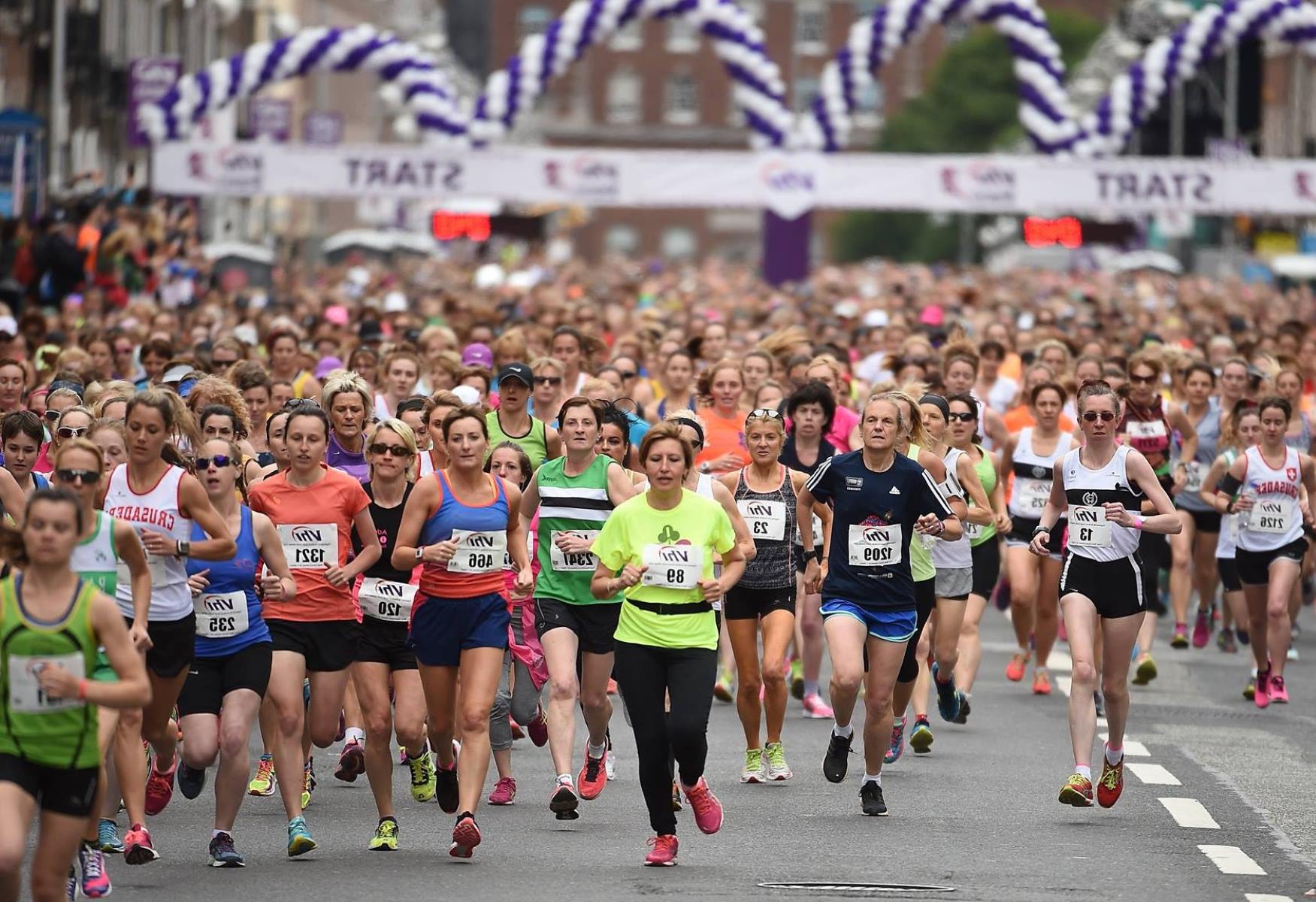Home>Training & Techniques>Mastering The Art Of Running A Flawless 10K


Training & Techniques
Mastering The Art Of Running A Flawless 10K
Published: March 1, 2024
Learn the best training and techniques for mastering the art of running a flawless 10K race. Discover expert tips to improve your performance and achieve your goals. Unlock your potential today!
(Many of the links in this article redirect to a specific reviewed product. Your purchase of these products through affiliate links helps to generate commission for Therunningadvisor.com, at no extra cost. Learn more)
Table of Contents
Understanding the 10K Distance
The 10K, also known as the 10-kilometer race, is a popular distance for both novice and seasoned runners. It spans a total of 6.2 miles and strikes a balance between speed and endurance, making it an appealing challenge for many. Understanding the nuances of the 10K distance is crucial for anyone looking to excel in this event.
The 10K race requires a blend of aerobic and anaerobic endurance, as well as the ability to sustain a challenging pace. It's often described as a test of both speed and stamina, demanding a strategic approach to pacing and mental fortitude. Unlike shorter races, such as 5Ks, the 10K demands a more measured and controlled start to avoid burning out too early. Conversely, it also necessitates a strong finishing kick to maximize performance.
Runners tackling the 10K distance should be prepared for a sustained effort that pushes their limits without veering into an all-out sprint. This requires a keen understanding of one's own capabilities and pacing strategies. Additionally, the 10K presents an opportunity for runners to refine their race tactics, as it allows for adjustments in pace and strategy throughout the event.
The 10K distance is often seen as a stepping stone for those aspiring to tackle longer races, such as half marathons and marathons. It serves as an excellent platform for building endurance and speed, making it a valuable component of a runner's training regimen.
Understanding the unique demands of the 10K distance is essential for developing a tailored training plan and race strategy. By recognizing the specific challenges and opportunities presented by this distance, runners can effectively prepare themselves for the physical and mental rigors of the 10K race.
Setting Realistic Training Goals
Setting realistic training goals is a fundamental step in preparing for a 10K race. It involves a thoughtful assessment of one's current fitness level, running experience, and lifestyle commitments. By establishing clear and achievable objectives, runners can structure their training in a way that maximizes progress while minimizing the risk of injury and burnout.
When setting training goals for a 10K race, it's important to consider both short-term and long-term aspirations. Short-term goals may revolve around incremental improvements in running performance, such as increasing weekly mileage, improving pace, or enhancing endurance. Long-term goals, on the other hand, could encompass achieving a personal best time in the 10K, mastering specific race tactics, or even progressing to longer distances.
A key aspect of setting realistic training goals is aligning them with individual capabilities and constraints. This involves taking into account factors such as age, fitness level, prior running experience, and any existing health considerations. By acknowledging these variables, runners can establish goals that are challenging yet attainable, fostering a sense of accomplishment and motivation throughout the training process.
Moreover, it's essential to integrate flexibility into training goals, recognizing that progress may not always follow a linear trajectory. Unforeseen circumstances, such as minor injuries, work commitments, or fluctuations in energy levels, can impact training consistency. By allowing for adaptability in their goals, runners can adjust their training plans without feeling discouraged or derailed by unexpected setbacks.
In addition to performance-oriented goals, it's beneficial to include non-quantifiable objectives related to enjoyment, mental resilience, and overall well-being. These could involve finding pleasure in the training process, cultivating a positive mindset, or prioritizing recovery and self-care. By encompassing holistic aspirations alongside performance targets, runners can foster a balanced and sustainable approach to their 10K training journey.
Ultimately, setting realistic training goals for a 10K race is about striking a harmonious balance between ambition and prudence. It entails crafting a roadmap that reflects individual aspirations, acknowledges personal limitations, and embraces the multifaceted nature of running. By doing so, runners can embark on their training with a clear sense of purpose, direction, and a realistic framework for achieving their desired outcomes.
Creating a Training Plan
Crafting a comprehensive and effective training plan is a pivotal step in preparing for a successful 10K race. A well-designed training regimen not only enhances physical conditioning but also cultivates mental resilience, strategic acumen, and overall race preparedness. Here's a detailed exploration of the key components involved in creating a training plan for a 10K race.
Assessing Current Fitness Level
Before embarking on the formulation of a training plan, it's essential to conduct an honest assessment of one's current fitness level. This evaluation encompasses factors such as running experience, recent race performances, baseline endurance, and any existing injuries or physical limitations. By gaining a clear understanding of where one stands in terms of fitness and running capabilities, it becomes possible to tailor the training plan to individual needs and aspirations.
Establishing Mileage and Frequency Targets
A fundamental aspect of the training plan revolves around determining weekly mileage targets and training frequency. This involves striking a balance between building endurance through longer runs and incorporating speed work and recovery days. By outlining specific mileage goals for each week and delineating the distribution of easy runs, tempo runs, interval training, and rest days, runners can structure their training in a manner that optimally prepares them for the demands of the 10K race.
Integrating Cross-Training and Strength Work
In addition to running-specific workouts, a well-rounded training plan should incorporate cross-training activities and strength training exercises. Cross-training, such as cycling, swimming, or yoga, not only provides variety and reduces the risk of overuse injuries but also contributes to overall fitness and muscular balance. Similarly, targeted strength training routines aimed at enhancing core stability, leg strength, and injury prevention play a crucial role in fortifying the body for the rigors of 10K racing.
Incorporating Tapering and Recovery
An often overlooked yet indispensable component of the training plan is the inclusion of tapering periods and dedicated recovery strategies. Tapering involves gradually reducing training volume and intensity in the weeks leading up to the race, allowing the body to recuperate and peak on race day. Moreover, prioritizing adequate rest, sleep, nutrition, and recovery modalities, such as foam rolling and stretching, is vital for sustaining training consistency and mitigating the risk of burnout and injury.
Adapting to Individual Needs and Progress
Flexibility and adaptability are integral to a well-crafted training plan. It's imperative to recognize that individual responses to training stimuli vary, and adjustments may be necessary based on progress, fatigue, and external factors. By remaining attuned to one's body, acknowledging the impact of training on overall well-being, and being open to modifying the plan as needed, runners can optimize their preparation for the 10K race while minimizing the likelihood of setbacks.
In essence, creating a training plan for a 10K race demands a meticulous blend of structure, specificity, versatility, and attentiveness to individual needs. By incorporating these elements into the training plan, runners can embark on their journey with confidence, purpose, and a strategic framework for realizing their full potential on race day.
Perfecting Your Running Form
Perfecting your running form is a critical aspect of 10K race preparation, as it directly influences performance, efficiency, and injury prevention. By honing proper running mechanics, runners can optimize their stride, conserve energy, and mitigate the risk of overuse injuries. Here's an in-depth exploration of the key elements involved in perfecting your running form for a 10K race.
Posture and Alignment
Maintaining a strong and balanced posture is foundational to efficient running. This involves standing tall with a slight forward lean from the ankles, engaging the core muscles to stabilize the torso, and ensuring the head is aligned with the spine. By upholding proper posture throughout the run, runners can optimize breathing, minimize unnecessary energy expenditure, and promote optimal biomechanical efficiency.
Foot Strike and Cadence
The manner in which the foot contacts the ground, known as foot strike, significantly impacts running performance. Striking the ground with a midfoot or forefoot landing, as opposed to a heel strike, is often associated with reduced impact forces and enhanced propulsion. Additionally, maintaining an optimal cadence of around 170-180 steps per minute promotes a swift and efficient stride, minimizing ground contact time and reducing the risk of overstriding.
Arm Swing and Upper Body Stability
Effective arm swing plays a pivotal role in propelling the body forward and maintaining balance. The arms should swing naturally and rhythmically, with the elbows bent at approximately 90 degrees. Concurrently, the upper body should remain stable, avoiding excessive rotation or side-to-side movement, which can lead to energy wastage and diminished running economy.
Breathing and Relaxation
Developing a relaxed and controlled breathing pattern is essential for sustaining endurance and minimizing tension. Deep diaphragmatic breathing, synchronized with the cadence of the run, optimizes oxygen intake and promotes relaxation. Furthermore, maintaining overall muscular relaxation, particularly in the shoulders, arms, and facial muscles, contributes to efficient energy utilization and a more fluid running motion.
Stride Length and Hip Alignment
Optimizing stride length and hip alignment is instrumental in fostering a balanced and powerful running gait. Strides should be neither excessively long nor overly short, with the feet landing beneath the body's center of mass. Additionally, ensuring proper hip alignment and stability minimizes lateral movement and enhances forward propulsion, thereby maximizing running efficiency and reducing the risk of hip and knee injuries.
By conscientiously refining these elements of running form, runners can elevate their performance, reduce the likelihood of injury, and cultivate a more enjoyable and sustainable running experience. Perfecting running form is an ongoing process that demands attentiveness, patience, and a commitment to continuous improvement. Through dedicated focus on refining running mechanics, runners can harness their full potential and excel in the 10K race with confidence and prowess.
Nutrition and Hydration for Peak Performance
Optimizing nutrition and hydration is a cornerstone of achieving peak performance in a 10K race. The intricate interplay between fueling the body with essential nutrients and maintaining proper hydration levels significantly impacts running performance, endurance, and overall well-being. Here's an in-depth exploration of the key considerations and strategies for nutrition and hydration tailored to the demands of a 10K race.
Pre-Race Nutrition
Prior to the 10K race, attention to pre-race nutrition is paramount. Consuming a balanced meal rich in complex carbohydrates, moderate in lean proteins, and low in fat approximately 2-3 hours before the race provides the body with a readily accessible source of energy. This pre-race meal should also be familiar to the runner, avoiding any new or potentially disruptive foods that could lead to gastrointestinal discomfort. Additionally, staying adequately hydrated in the hours leading up to the race is crucial for optimizing performance and minimizing the risk of dehydration.
Hydration Strategies
Maintaining proper hydration throughout the training period and on race day is essential for sustaining performance and safeguarding against the adverse effects of dehydration. Hydration strategies should encompass regular consumption of water and, if necessary, electrolyte-enhanced beverages during training runs to replenish fluid losses. On race day, strategically consuming small sips of water at designated water stations, particularly in warmer conditions, helps to offset fluid losses without causing discomfort or gastrointestinal distress.
Fueling During the Race
For optimal performance during the 10K race, it's vital to consider fueling needs, especially for runs lasting longer than 45-60 minutes. Depending on individual preferences and tolerances, consuming easily digestible carbohydrates in the form of energy gels, chews, or sports drinks during the race can help maintain glycogen stores and sustain energy levels. It's imperative to practice fueling strategies during training to gauge their effectiveness and minimize the likelihood of digestive issues on race day.
Post-Race Recovery Nutrition
Following the 10K race, prioritizing post-race recovery nutrition is instrumental in facilitating muscle repair, glycogen replenishment, and overall recovery. Consuming a balanced meal containing a mix of carbohydrates and proteins within the first 30-60 minutes after the race accelerates the recovery process and promotes muscle recovery. Additionally, staying adequately hydrated by consuming fluids rich in electrolytes aids in restoring fluid balance and expediting post-race recovery.
Individualized Approach
It's important to note that nutrition and hydration strategies are highly individualized, influenced by factors such as sweat rate, environmental conditions, and personal tolerances. Experimenting with different nutrition and hydration approaches during training runs allows runners to identify the most effective strategies that align with their unique needs and preferences. By adopting a personalized approach to nutrition and hydration, runners can optimize their race day performance and enhance their overall running experience.
In essence, prioritizing sound nutrition and hydration practices is integral to achieving peak performance in a 10K race. By attentively addressing pre-race nutrition, hydration strategies, fueling during the race, and post-race recovery nutrition, runners can fortify their bodies for the demands of the race and maximize their potential on race day. Through a tailored and proactive approach to nutrition and hydration, runners can elevate their performance, enhance their endurance, and derive greater enjoyment from their 10K racing endeavors.
Mental Preparation and Strategies
Mental preparation is a pivotal component of 10K race readiness, wielding a profound influence on performance, resilience, and overall race experience. Cultivating a resilient and focused mindset empowers runners to navigate the physical and mental challenges inherent in the 10K distance. Here's an in-depth exploration of the key elements involved in mental preparation and strategies tailored to the demands of a 10K race.
Visualization and Positive Affirmations
Engaging in visualization exercises, wherein runners vividly imagine themselves navigating the various stages of the race with strength and determination, can bolster confidence and mental fortitude. Visualizing crossing the finish line with a sense of accomplishment and elation reinforces a positive mindset and primes the subconscious for success. Additionally, incorporating positive affirmations, such as "I am strong," "I am capable," and "I embrace the challenge," cultivates a resilient and optimistic outlook, fostering mental resilience in the face of adversity.
Goal Setting and Focus
Establishing clear and attainable race goals, whether centered on achieving a specific time, executing a strategic race plan, or surpassing personal milestones, provides a focal point for mental preparation. By anchoring their focus on these objectives, runners can channel their mental energy towards purposeful and determined efforts, mitigating distractions and fortifying their resolve. Moreover, breaking down the race into manageable segments and focusing on each stage individually enables runners to stay present and engaged, preventing mental fatigue and enhancing performance.
Stress Management and Mindfulness
Practicing stress management techniques, such as deep breathing, progressive muscle relaxation, and mindfulness meditation, equips runners with invaluable tools for regulating anxiety and maintaining composure during the race. Cultivating mindfulness, characterized by non-judgmental awareness of the present moment, enables runners to navigate discomfort and adversity with equanimity, fostering a calm and focused mental state. By integrating these practices into their training regimen, runners can develop a heightened sense of self-awareness and emotional regulation, enhancing their mental preparedness for the 10K race.
Resilience and Adaptability
Embracing a mindset of resilience and adaptability is essential for navigating the inevitable ebbs and flows of the 10K race. Anticipating and acknowledging potential challenges, such as fatigue, discomfort, or unexpected race dynamics, empowers runners to proactively devise coping strategies and maintain a resilient outlook. Embracing adaptability, whether in response to adverse weather conditions or unforeseen race circumstances, enables runners to pivot and recalibrate their approach, fostering mental agility and resourcefulness.
Read more: Mastering The Art Of Early Morning Running
Positive Self-Talk and Encouragement
Cultivating a habit of positive self-talk and self-encouragement serves as a potent tool for bolstering confidence and sustaining motivation throughout the race. Internal dialogue characterized by self-compassion, encouragement, and belief in one's capabilities nurtures a supportive and empowering mental environment. By fostering a positive and self-affirming inner narrative, runners can bolster their mental resilience, sustain motivation, and navigate the 10K race with a sense of self-assuredness and determination.
In essence, mental preparation and strategies play a pivotal role in shaping the outcome of a 10K race. By integrating visualization, positive affirmations, goal setting, stress management, resilience, and positive self-talk into their mental preparation, runners can fortify their mindset, enhance their performance, and derive greater fulfillment from their 10K racing endeavors. Through a proactive and holistic approach to mental readiness, runners can harness the power of their minds to conquer the 10K distance with confidence, determination, and unwavering resolve.
Race Day Logistics and Execution
Race day heralds the culmination of weeks of dedicated training and preparation, marking the moment when runners put their skills and endurance to the ultimate test. Navigating the logistics and executing a well-crafted race strategy are pivotal to ensuring a smooth and successful 10K race experience.
Pre-Race Preparation
Arriving at the race venue well in advance allows runners to acclimate to the surroundings, complete any necessary registration or check-in procedures, and familiarize themselves with the start and finish areas. Ensuring that race bibs, timing chips, and any essential gear are securely fastened and in place minimizes last-minute stress and distractions.
Warm-Up and Mental Focus
Engaging in a thorough warm-up routine, comprising dynamic stretches, light jogging, and strides, primes the body for optimal performance and reduces the risk of injury. Concurrently, cultivating a focused and positive mindset through deep breathing, visualization, and affirmations sets the stage for a confident and composed race start.
Strategic Pacing and Adaptability
Implementing a well-defined pacing strategy tailored to individual capabilities and race goals is instrumental in optimizing performance. By starting at a sustainable pace and gradually building momentum, runners can conserve energy for the latter stages of the race. Remaining adaptable to race dynamics, such as elevation changes, weather conditions, and competitor movements, enables runners to make real-time adjustments and maintain an effective race tempo.
Hydration and Fueling
Strategically navigating water stations and, if necessary, fueling points along the race course ensures that runners maintain optimal hydration and energy levels. Sipping water at regular intervals and, if practiced during training, consuming energy gels or sports drinks as needed supports sustained performance and mitigates the risk of dehydration and glycogen depletion.
Mental Resilience and Focus
Drawing upon mental preparation techniques, such as positive self-talk, mindfulness, and resilience strategies, empowers runners to navigate discomfort and mental fatigue with fortitude. Maintaining a present and determined mindset, focusing on short-term objectives, and embracing the support of fellow runners and spectators fosters mental resilience and sustains motivation throughout the race.
Sprint to the Finish
As the race enters its final stretch, summoning a finishing kick and unleashing a surge of energy enables runners to conclude the 10K with strength and determination. Channeling the culmination of training, perseverance, and unwavering resolve, sprinting towards the finish line encapsulates the essence of a well-executed race strategy.
Post-Race Reflection
Upon crossing the finish line, taking a moment to reflect on the race experience, celebrate personal achievements, and express gratitude for the support of fellow runners and race organizers fosters a sense of fulfillment and accomplishment. Engaging in light post-race stretching, rehydrating, and refueling with nourishing snacks supports the recovery process and sets the stage for post-race relaxation and camaraderie.
In essence, meticulous attention to race day logistics and the execution of a strategic race plan are pivotal to realizing one's full potential in a 10K race. By embracing thorough pre-race preparation, strategic pacing, mental resilience, and a spirited finish, runners can navigate the intricacies of race day with confidence, determination, and a profound sense of achievement.
Post-Race Recovery and Reflection
Upon crossing the finish line of a demanding 10K race, the focus shifts from the intensity of the race to the essential aspects of post-race recovery and reflection. This phase is integral to the overall race experience, encompassing physical recuperation, emotional introspection, and the assimilation of valuable insights garnered from the race.
Physical Recovery
The immediate post-race period calls for deliberate attention to physical recovery. Engaging in light, low-impact activities such as walking or gentle stretching aids in promoting blood circulation and alleviating muscle tightness. Additionally, rehydrating with water or electrolyte-rich beverages replenishes fluid losses and supports the body's recovery process. Embracing post-race nutrition, characterized by a balance of carbohydrates and proteins, facilitates muscle repair and glycogen replenishment, expediting the recovery timeline.
Reflection and Gratitude
Amidst the physical recuperation, the post-race phase provides an opportune moment for reflective introspection. Taking stock of the race experience, acknowledging personal achievements, and expressing gratitude for the support of fellow runners, spectators, and race organizers fosters a sense of fulfillment and appreciation. Reflecting on the journey leading up to the race, the challenges surmounted, and the resilience demonstrated during the race cultivates a profound sense of accomplishment and gratitude.
Learning and Growth
The post-race period serves as a fertile ground for gleaning valuable insights and lessons from the race experience. Identifying strengths and areas for improvement, whether in pacing strategies, mental resilience, or race execution, lays the foundation for continued growth and development as a runner. Embracing the lessons derived from the race, be it tactical, mental, or physical, nurtures a spirit of continuous improvement and fuels the aspiration for future endeavors.
Rest and Recovery
Embracing rest and recovery in the days following the race is paramount for allowing the body to heal and rejuvenate. Prioritizing adequate sleep, engaging in gentle mobility exercises, and refraining from intense training activities enables the body to recover from the exertion of the race. Moreover, nurturing a compassionate and patient approach to post-race recovery fosters a harmonious balance between physical restoration and mental rejuvenation.
Looking Ahead
As the post-race recovery phase unfolds, it also serves as a juncture for contemplating future aspirations and endeavors. Setting new goals, whether centered on refining race strategies, tackling longer distances, or exploring diverse running experiences, ignites a sense of anticipation and purpose. Embracing the post-race period as a springboard for future pursuits infuses the running journey with vitality and a sense of ongoing progression.
In essence, the post-race recovery and reflection phase encapsulates a multifaceted process of physical restoration, emotional introspection, and forward-looking aspirations. By embracing this phase with mindfulness, gratitude, and a commitment to growth, runners can derive profound fulfillment from their 10K race experience and set the stage for a dynamic and purposeful running journey ahead.







